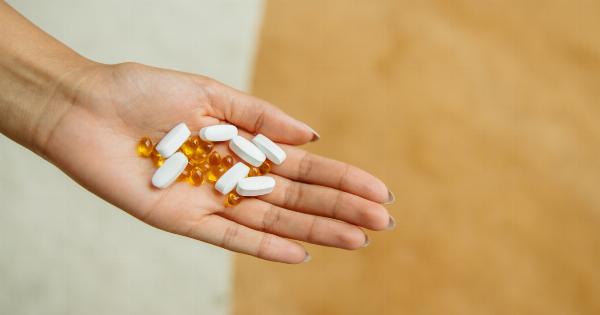Psoriasis is a chronic autoimmune condition that affects the skin, causing flaky and itchy patches that are often accompanied by pain.
While there is no cure for this condition, certain treatments can help manage the symptoms and potentially achieve clearer skin. In this article, we will explore the best ways to deal with psoriasis and get back to having pure skin.
What is Psoriasis?
Psoriasis is a chronic autoimmune disease that affects the skin by causing patches of thick, red, scaly skin.
The cause of psoriasis is not yet completely understood, but it is believed to involve a combination of genetic, environmental, and immune factors. There are several different types of psoriasis, each characterized by the appearance and location of the patches.
Types of Psoriasis
There are six main types of psoriasis:.
Plaque Psoriasis
The most common type of psoriasis, plaque psoriasis, presents as raised, red patches with white or silver scales. These patches can be itchy, painful, and commonly appear on the knees, elbows, scalp, and lower back.
Guttate Psoriasis
This type of psoriasis usually appears as small, pink spots on the skin, and is often triggered by a strep infection. Guttate psoriasis is common in children and young adults.
Inverse Psoriasis
Inverse psoriasis appears in areas of the body where there are skin folds, such as the armpits, groin, and under the breasts. The patches are often bright red and smooth.
Pustular Psoriasis
This type of psoriasis is characterized by white blisters filled with pus that appear on the skin. Pustular psoriasis can be painful and accompanied by fever and chills.
Erythrodermic Psoriasis
Erythrodermic psoriasis presents as widespread redness and scaling of the skin, often accompanied by severe itching and pain. This is the least common type of psoriasis, but can be life-threatening if left untreated.
Nail Psoriasis
Nail psoriasis can cause changes to the fingernails and toenails, such as discoloration, pitting, thickening, and separation from the nail bed. It can also cause the nails to become brittle and prone to crumbling.
Psoriasis Treatment Options
While there is no cure for psoriasis, several treatment options can help manage the symptoms and potentially achieve clearer skin.
The right treatment plan depends on the type and severity of psoriasis, as well as other individual factors such as overall health and any other medical conditions present.
Topical Treatments
Topical treatments are applied directly to the affected skin and can help reduce inflammation, relieve itching, and promote skin healing. Options include topical corticosteroids, vitamin D analogues, topical retinoids, salicylic acid, and coal tar.
Phototherapy
Phototherapy involves exposing the skin to certain types of light, such as ultraviolet light, to reduce inflammation and promote healing. This type of treatment is typically administered in a doctor’s office or clinic.
Systemic Medications
Systemic medications are taken orally or injected and work throughout the body to manage psoriasis symptoms.
These medications are often reserved for more severe cases of psoriasis and should only be used under the close guidance of a healthcare provider.
Natural Remedies
While there are no natural remedies that can cure psoriasis, certain lifestyle changes and natural remedies may help reduce symptoms and promote overall skin health.
For example, including anti-inflammatory foods in the diet, such as fruits, vegetables, and fatty fish, can help manage inflammation in the body.
Lifestyle Changes for Psoriasis Management
Along with treatment options, certain lifestyle changes may also help manage psoriasis symptoms and promote overall skin health. These changes include:.
Reduce Stress
Stress can exacerbate psoriasis symptoms, so finding ways to reduce stress in daily life may help manage symptoms. This might include practicing mindfulness meditation, yoga, or deep breathing exercises.
Maintain a Healthy Diet
Eating a healthy, well-balanced diet can promote overall skin health and may help manage psoriasis symptoms. This includes eating plenty of fruits and vegetables, lean proteins, and healthy fats.
Avoid Triggering Foods
Some people with psoriasis may have trigger foods that cause flare-ups in their symptoms. Common trigger foods include dairy, gluten, and nightshade vegetables (such as tomatoes and peppers).
Quit Smoking
Smoking can worsen psoriasis symptoms and increase the risk of other health problems. Quitting smoking is an important step in managing psoriasis symptoms and promoting overall health.
Conclusion
Psoriasis is a chronic autoimmune condition that can be difficult to manage. However, there are several treatment options available that can help manage symptoms and potentially achieve clearer skin.
Along with treatment, certain lifestyle changes may also help promote overall skin health and manage psoriasis symptoms. Talk to your healthcare provider to determine the best course of treatment for your specific condition.






























